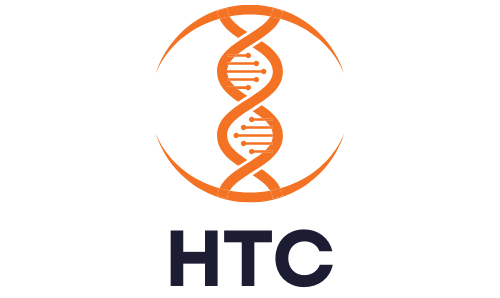Comprehensive Guide to Financial Modeling for HealthTech Investments
The HealthTech industry is undergoing a significant transformation, fueled by rapid technological advancements and an increasing focus on patient-centered care. Innovations in digital health, biopharmaceuticals, personalized medicine, and medical devices are revolutionizing how healthcare is delivered, managed, and experienced. This sector is expected to continue its rapid growth, driven by factors such as the aging global population, rising healthcare costs, and the need for more efficient healthcare delivery systems.
Importance of Financial Modeling in Evaluating HealthTech Investments
As the HealthTech industry grows, so does the complexity of evaluating potential investments within it. Financial modeling plays a crucial role in this process, providing investors with a structured way to assess the viability and potential returns of HealthTech startups. Accurate financial models help in understanding the revenue potential, cost structure, valuation, and possible exit scenarios, thereby enabling informed decision-making.
We hope to provide comprehensive insights into the critical aspects of financial modeling for HealthTech investments. We will cover:
- Revenue forecasting and pricing strategies tailored to the unique dynamics of the HealthTech industry.
- Cost structure analysis and strategies for optimizing operational efficiency.
- Valuation methodologies suitable for assessing the value of HealthTech startups.
- Exit scenarios, including initial public offerings (IPOs), acquisitions, and strategic partnerships, to evaluate potential returns on investment.
By the end of this guide, investors and stakeholders will have a deeper understanding of how to create robust financial models that can effectively evaluate HealthTech investments, mitigate risks, and maximize returns.
Revenue Forecasting and Pricing Strategies
Importance of Accurate Revenue Forecasting in HealthTech
Accurate revenue forecasting is essential for HealthTech investments as it directly impacts the valuation, strategic planning, and overall viability of a startup. Investors rely on revenue forecasts to gauge the potential return on investment (ROI) and to make informed decisions about funding. Accurate forecasts help startups manage cash flow, allocate resources efficiently, and achieve sustainable growth.
Unique Factors Affecting Revenue in HealthTech
Several unique factors influence revenue generation in the HealthTech sector, making forecasting particularly complex:
- Regulatory Approvals: The success of HealthTech products, especially biopharmaceuticals and medical devices, heavily depends on obtaining regulatory approvals from bodies like the FDA (U.S. Food and Drug Administration) or EMA (European Medicines Agency). Delays or failures in the approval process can significantly impact revenue projections.
- Adoption Rates: The adoption of new HealthTech innovations by healthcare providers and patients is often gradual. Factors such as ease of integration into existing workflows, user training, and perceived benefits influence adoption rates, which in turn affect revenue.
- Reimbursement Policies: HealthTech companies must navigate complex reimbursement landscapes to secure payments from insurance companies and government programs. Reimbursement policies can vary widely and impact the pricing and sales volume of HealthTech products.
Case Example: Revenue Forecasting in Biopharmaceuticals and Personalized Medicine
Consider a biopharmaceutical company developing a new personalized cancer treatment. Accurate revenue forecasting for this company involves:
- Clinical Trial Outcomes: Predicting the success rates of ongoing clinical trials and their timelines.
- Regulatory Milestones: Estimating the time required to achieve regulatory approvals.
- Market Penetration: Assessing the potential market size, considering the specific cancer type and the prevalence of genetic markers that the treatment targets.
- Pricing Strategy: Setting a price point that balances affordability with the need to recoup R&D investments and generate profit.
- Reimbursement Scenarios: Analyzing possible reimbursement rates from insurers and government health programs.
Using these inputs, the company can develop a revenue forecast that accounts for various scenarios, helping investors understand potential risks and rewards.
Detailed Look at Pricing Strategies for HealthTech Products and Services
Pricing strategies in HealthTech need to consider the high costs of R&D, regulatory compliance, and market entry. Here are some common approaches:
- Cost-Plus Pricing: This method involves adding a standard markup to the cost of producing a product. While straightforward, it may not always capture the product's value to patients or healthcare providers.
- Value-Based Pricing: Prices are set based on the perceived value to the end-user, considering the product's ability to improve outcomes or reduce costs. For instance, a digital health platform that significantly reduces hospital readmissions could command a higher price due to its cost-saving potential.
- Subscription Models: Especially prevalent in digital health solutions, subscription models offer recurring revenue streams. Customers pay a monthly or annual fee for access to the product or service, which can help stabilize cash flow.
- Tiered Pricing: Offering different pricing levels based on features or usage can attract a broader range of customers. For example, a HealthTech platform might offer basic, premium, and enterprise tiers.
- Reimbursement-Linked Pricing: Aligning prices with reimbursement rates from insurers ensures that products remain affordable for patients while securing revenue for the company.
By carefully considering these factors and strategies, HealthTech companies can develop robust revenue forecasts and pricing models that reflect their unique market dynamics and maximize their financial sustainability.
Cost Structure Analysis and Operational Efficiency
Importance of Analyzing Cost Structure in HealthTech Startups
Understanding and analyzing the cost structure of HealthTech startups is critical for evaluating their financial health, operational efficiency, and potential for profitability. By dissecting various cost components, investors and managers can identify areas for cost optimization, improve resource allocation, and enhance overall operational efficiency. This analysis is essential for maintaining a sustainable business model and achieving long-term growth.
Key Cost Components
- R&D Expenses: Research and Development (R&D) is a significant cost for HealthTech startups, particularly for biopharmaceutical and medical device companies. R&D costs include salaries for research staff, laboratory equipment, materials, and external research collaborations.
- Clinical Trial Costs: For biopharmaceutical and medical device companies, clinical trials are necessary to demonstrate safety and efficacy. Costs include patient recruitment, site management, data collection, monitoring, and regulatory compliance.
- Manufacturing: Manufacturing costs vary depending on the product. For biopharmaceuticals, this includes production of active pharmaceutical ingredients (APIs), formulation, and packaging. Medical devices require costs related to materials, assembly, and quality control.
- Distribution: Distribution costs encompass logistics, warehousing, shipping, and handling. Efficient distribution is crucial to ensure timely delivery of products to healthcare providers and patients.
- Overhead: Overhead costs include administrative expenses, office space, utilities, insurance, and other general business expenses.
Differences in Cost Structures
- Biopharmaceuticals: High R&D and clinical trial costs dominate the cost structure. Manufacturing costs can also be substantial, particularly for biologics. Regulatory compliance adds to overhead.
- Digital Health Solutions: Lower R&D and manufacturing costs compared to biopharmaceuticals. Key costs include software development, data storage, cybersecurity, and customer acquisition. Subscription-based revenue models can help manage cash flow.
- Medical Devices: Significant costs are associated with R&D, prototyping, clinical testing, and manufacturing. Distribution and regulatory compliance also contribute to overall costs.
Strategies for Cost Optimization and Improving Operational Efficiency
- Efficient R&D Management:
- Prioritize Projects: Focus on high-potential projects to allocate resources effectively.
- Collaborations: Partner with academic institutions or other companies to share R&D costs and leverage external expertise.
- Outsourcing: Use contract research organizations (CROs) for specific R&D tasks to reduce in-house expenses.
- Clinical Trial Optimization:
- Adaptive Trial Designs: Implement adaptive trial designs to reduce costs and time by modifying trials based on interim results.
- Digital Trials: Utilize digital tools for remote monitoring and data collection to streamline clinical trials and reduce site management costs.
- Manufacturing Efficiency:
- Lean Manufacturing: Apply lean manufacturing principles to minimize waste and improve production efficiency.
- Scalability: Design manufacturing processes that can scale efficiently as demand grows.
- Distribution Strategies:
- Optimized Logistics: Use data analytics to optimize logistics and reduce shipping costs.
- Strategic Warehousing: Position warehouses strategically to minimize shipping times and costs.
- Overhead Control:
- Cost Management: Regularly review and manage administrative expenses to avoid unnecessary overhead.
- Technology Utilization: Use technology to automate administrative tasks and reduce labor costs.
Technologies and Methods for Streamlining Processes
- Artificial Intelligence (AI) and Machine Learning:
- R&D Efficiency: AI can accelerate drug discovery and development by analyzing large datasets and predicting successful candidates.
- Clinical Trial Management: Machine learning algorithms can optimize patient recruitment and monitor trial progress in real-time.
- Automation:
- Manufacturing: Automation in manufacturing processes increases precision, reduces errors, and lowers labor costs.
- Administrative Tasks: Automate routine administrative tasks to improve efficiency and reduce costs.
- Strategic Partnerships:
- Collaborations: Form strategic partnerships with other companies, academic institutions, and research organizations to share costs and resources.
- Joint Ventures: Enter joint ventures for shared R&D projects or market expansion efforts.
By leveraging these strategies and technologies, HealthTech startups can optimize their cost structures and enhance operational efficiency, positioning themselves for sustainable growth and profitability.
Valuation Methodologies and Exit Scenarios
Challenges of Valuing HealthTech Startups
Valuing HealthTech startups presents unique challenges due to the high levels of uncertainty and complexity inherent in the industry. Key challenges include:
- High R&D Costs and Long Timelines: Significant upfront investment and extended timelines before revenue generation.
- Regulatory Hurdles: Uncertainty around regulatory approvals can significantly impact a startup's potential.
- Market Adoption Rates: Difficult to predict how quickly healthcare providers and patients will adopt new technologies.
- Technological Risk: Rapid technological advancements can render existing solutions obsolete.
To address these challenges, investors and analysts use various valuation methodologies that consider the unique aspects of HealthTech startups.
Discounted Cash Flow (DCF) Method: Explanation and Application
The Discounted Cash Flow (DCF) method is a fundamental valuation approach that estimates the value of an investment based on its expected future cash flows, discounted to their present value. This method involves the following steps:
- Forecasting Cash Flows: Project the startup's future cash flows, considering revenue growth, operating expenses, capital expenditures, and changes in working capital.
- Determining the Discount Rate: Calculate the discount rate, typically the Weighted Average Cost of Capital (WACC), which reflects the startup's cost of equity and debt.
- Calculating Terminal Value: Estimate the terminal value, which represents the startup's value at the end of the forecast period, using methods like the perpetuity growth model or exit multiple approach.
- Discounting Cash Flows: Discount the projected cash flows and terminal value to their present value using the discount rate.
- Summing Present Values: Sum the present values of the projected cash flows and terminal value to determine the startup's overall valuation.
Application in HealthTech: DCF is particularly useful for established HealthTech startups with predictable cash flows. However, for early-stage startups, it requires careful consideration of assumptions and scenario analysis to account for uncertainties.
Comparable Company Analysis: Explanation and Application
Comparable company analysis (CCA) involves valuing a startup based on the valuation multiples of similar publicly traded companies. This method includes the following steps:
- Identifying Comparables: Select a group of publicly traded companies that are similar to the startup in terms of industry, size, growth stage, and business model.
- Selecting Multiples: Choose relevant financial multiples, such as Price-to-Earnings (P/E), Enterprise Value-to-Revenue (EV/Revenue), and Enterprise Value-to-EBITDA (EV/EBITDA).
- Calculating Averages: Calculate the average multiples of the comparable companies.
- Applying Multiples: Apply the average multiples to the startup's corresponding financial metrics (e.g., revenue, EBITDA) to estimate its valuation.
Application in HealthTech: CCA is useful for benchmarking HealthTech startups against similar companies and providing a market-based perspective on valuation. It is particularly effective when there is a sufficient number of comparable companies with publicly available data.
Understanding Potential Exit Scenarios
- Initial Public Offering (IPO):
- Pros: Provides significant capital, enhances credibility, and offers liquidity for early investors.
- Cons: Expensive and time-consuming process, increased regulatory scrutiny, and ongoing compliance costs.
- Suitability: Best for mature startups with robust financial performance, strong growth prospects, and a compelling market story.
- Acquisition:
- Pros: Immediate liquidity, potentially high valuation, strategic synergies with the acquirer.
- Cons: Loss of control for founders, potential cultural clashes, and integration challenges.
- Suitability: Ideal for startups with unique technologies or products that complement the acquirer's portfolio.
- Strategic Partnerships:
- Pros: Access to additional resources, market expansion opportunities, and risk-sharing.
- Cons: Potential conflicts of interest, dependency on the partner's performance.
- Suitability: Suitable for startups seeking growth capital and strategic alliances without immediate exit.
Evaluating Risk-Reward Profiles Through Exit Scenario Analysis
Analyzing various exit scenarios helps investors evaluate the potential risk-reward profiles of HealthTech investments. Key considerations include:
- Market Conditions: Assess the market conditions and investor sentiment, which can significantly impact the feasibility and attractiveness of different exit options.
- Startup’s Growth Stage: Consider the startup's growth stage and financial performance to determine the most appropriate exit strategy.
- Investor Objectives: Align the exit strategy with the investor's objectives, whether seeking quick liquidity, long-term growth, or strategic synergies.
- Scenario Analysis: Conduct scenario analysis to evaluate different exit options under various market and business conditions, estimating potential valuations and returns for each scenario.
Case Example:
- Company X, a HealthTech startup specializing in AI-driven diagnostics, explores different exit scenarios:
- IPO Scenario: Assumes continued strong growth and successful market penetration, resulting in a high valuation multiple.
- Acquisition Scenario: Assumes acquisition by a major healthcare company seeking to enhance its diagnostic capabilities, with strategic synergies leading to a premium valuation.
- Strategic Partnership Scenario: Assumes forming a partnership with a leading medical device manufacturer, providing growth capital and market access while maintaining operational independence.
By analyzing these scenarios, investors can better understand the potential outcomes and align their strategies with the most promising opportunities.
Comprehensive financial modeling is essential for evaluating HealthTech investments, providing critical insights into revenue forecasting, cost structure analysis, valuation methodologies, and exit scenarios. By leveraging robust financial modeling techniques and understanding the unique challenges and opportunities in the HealthTech sector, investors can make informed decisions and maximize their returns.
Key takeaways include:
- Accurate revenue forecasting and pricing strategies are crucial for assessing growth potential.
- Detailed cost structure analysis and operational efficiency improvements can enhance profitability.
- Employing appropriate valuation methodologies and understanding exit scenarios help in evaluating risk-reward profiles.
As the HealthTech industry continues to evolve, the demand for sophisticated financial modeling techniques will only increase, enabling investors to navigate this dynamic sector and capitalize on its growth potential.
Case Study: Successful HealthTech Investment in Notable Labs
Introduction to Notable Labs and Their Business Model
Notable Labs is a pioneering clinical-stage platform therapeutics company that leverages advanced artificial intelligence (AI) and machine learning (ML) to develop predictive precision medicines. Founded with the mission to revolutionize cancer treatment, Notable Labs uses its proprietary Predictive Medicine Platform (PMP) to analyze patient-derived cancer cells and predict the most effective therapeutic regimens. This approach tailors treatments to the unique genetic, molecular, and clinical profiles of individual patients, significantly increasing the likelihood of treatment success.
Analysis of Notable Labs' Revenue Forecasts
Target Population: Notable Labs primarily targets cancer patients, focusing on those with difficult-to-treat cancers that have not responded well to conventional treatments. Their personalized approach is especially valuable for patients with rare or aggressive cancers, where standard treatment protocols often fall short.
Adoption Rates: The adoption rates for Notable Labs' solutions are projected to grow steadily as the effectiveness of their personalized therapies is demonstrated through clinical trials and real-world applications. Collaborations with leading oncologists and cancer treatment centers have accelerated adoption, as these key opinion leaders endorse the use of predictive precision medicine.
Reimbursement Policies: Reimbursement policies play a critical role in the revenue potential for Notable Labs. The company has actively engaged with insurance providers and healthcare payers to demonstrate the cost-effectiveness of their therapies. By highlighting the potential for improved patient outcomes and reduced healthcare costs, Notable Labs has secured favorable reimbursement agreements, ensuring that their treatments are accessible to a broad patient population.
Evaluation of Notable Labs' Cost Structure
Software Development: A significant portion of Notable Labs' costs is allocated to the development and maintenance of their Predictive Medicine Platform. This includes expenses related to software engineering, algorithm development, and continuous improvements to the platform's predictive capabilities.
Data Storage: Storing and managing vast amounts of genomic and clinical data requires substantial investment in secure and scalable data storage solutions. Notable Labs utilizes cloud-based storage systems that offer flexibility and security, though these systems come with ongoing operational costs.
Customer Acquisition: Customer acquisition costs (CAC) encompass marketing and sales efforts aimed at oncologists, healthcare providers, and patients. Notable Labs has invested in targeted marketing campaigns, educational outreach, and partnerships with cancer treatment centers to build awareness and drive adoption of their solutions.
Valuation Methods Used
Comparable Company Analysis (CCA): To value Notable Labs, comparable company analysis was conducted by identifying similar HealthTech companies specializing in precision medicine and AI-driven diagnostics. Key valuation multiples, such as EV/Revenue and EV/EBITDA, were applied to Notable Labs' financial metrics to estimate its market value. This method provided a benchmark valuation based on industry peers.
Discounted Cash Flow (DCF) Method: The DCF method was also used to value Notable Labs, involving the following steps:
- Forecasting Cash Flows: Projected future cash flows based on revenue growth, operating expenses, and capital expenditures.
- Determining Discount Rate: Calculated the Weighted Average Cost of Capital (WACC) to reflect the company's cost of equity and debt.
- Calculating Terminal Value: Estimated the terminal value using the perpetuity growth model.
- Discounting Cash Flows: Discounted the projected cash flows and terminal value to their present value.
- Summing Present Values: Summed the present values to determine the overall valuation.
Outcome: Growth, Strategic Partnerships, Acquisition, and Investor Returns
Growth: Notable Labs experienced significant growth in terms of patient adoption, revenue, and technological advancements. Their predictive precision medicine approach garnered widespread recognition, leading to increased market share and revenue generation.
Strategic Partnerships: The company formed strategic partnerships with leading academic institutions, pharmaceutical companies, and cancer treatment centers. These collaborations provided access to valuable data, research expertise, and expanded market reach.
Acquisition: Notable Labs' innovative technology and market success attracted the attention of larger pharmaceutical companies. The company was eventually acquired by a major player in the healthcare industry, providing substantial returns for early investors. The acquisition allowed Notable Labs to scale their operations further and integrate their technology into broader cancer treatment protocols.
Investor Returns: Investors in Notable Labs realized significant returns on their investment due to the company's growth trajectory, successful strategic partnerships, and lucrative acquisition. The combination of effective revenue forecasting, efficient cost management, and strategic positioning contributed to this successful outcome.
Lessons Learned from the Investment in Notable Labs
- Importance of Accurate Revenue Forecasting: Accurately projecting revenue by considering target population, adoption rates, and reimbursement policies is crucial for understanding growth potential and securing investor confidence.
- Managing Cost Structures: Effective cost management, particularly in software development, data storage, and customer acquisition, is vital for maintaining financial health and operational efficiency.
- Valuation Methodologies: Utilizing both comparable company analysis and discounted cash flow methods provides a comprehensive view of a startup's valuation, accommodating different perspectives and risk profiles.
- Strategic Partnerships: Forming strategic partnerships can significantly enhance a startup's capabilities, market reach, and overall value proposition.
- Exit Scenarios: Understanding and planning for various exit scenarios, including acquisition and IPO, can help investors and startups align their strategies for maximum returns.
Conclusion
Recap of the Importance of Financial Modeling in HealthTech Investments
Financial modeling plays a critical role in evaluating and making informed decisions about HealthTech investments. It allows investors to assess the financial viability and growth potential of startups by providing a structured approach to forecasting revenue, analyzing cost structures, and determining appropriate valuation methods. As demonstrated in the case study of Notable Labs, robust financial modeling is essential for understanding the key drivers of success and ensuring that investments yield substantial returns.
Key Takeaways
- Revenue Forecasting:
- Accurate revenue forecasting is crucial for predicting the financial health and growth trajectory of HealthTech startups.
- Consideration of unique factors such as regulatory approvals, adoption rates, and reimbursement policies is essential in developing realistic revenue projections.
- Cost Structure Analysis:
- Analyzing the cost structure helps identify the primary expenses associated with HealthTech startups, including R&D, clinical trials, manufacturing, distribution, and overhead.
- Differences in cost structures between biopharmaceuticals, digital health solutions, and medical devices must be understood to optimize costs and improve operational efficiency.
- Valuation Methodologies:
- Employing multiple valuation methodologies, such as Discounted Cash Flow (DCF) and Comparable Company Analysis (CCA), provides a comprehensive view of a startup's value.
- Understanding the strengths and limitations of each method helps in deriving more accurate and reliable valuations.
- Exit Scenarios:
- Evaluating potential exit scenarios, including IPOs, acquisitions, and strategic partnerships, is critical for understanding the risk-reward profile of HealthTech investments.
- Planning for various exit strategies ensures that investors and startups are aligned in their long-term goals and can maximize returns.
Future Outlook
The HealthTech sector is poised for significant growth, driven by technological advancements and increasing demand for innovative healthcare solutions. As this industry continues to evolve, the need for robust financial modeling techniques will become even more pronounced. Investors who leverage these techniques will be better positioned to identify high-potential startups, make informed investment decisions, and navigate the complexities of the HealthTech landscape.
Encouragement for Investors
Investors are encouraged to leverage industry insights and best practices to maximize their returns in HealthTech investments. By staying informed about emerging trends, regulatory changes, and technological advancements, they can identify promising opportunities and support startups that are poised to drive meaningful innovation in healthcare. Adopting comprehensive financial modeling frameworks will not only enhance their decision-making process but also contribute to the growth and success of the HealthTech sector as a whole.
In conclusion, the integration of advanced financial modeling techniques is essential for navigating the dynamic and rapidly evolving HealthTech industry. By focusing on accurate revenue forecasting, thorough cost structure analysis, appropriate valuation methodologies, and strategic exit planning, investors can achieve substantial returns while fostering innovation and improving healthcare outcomes. The future of HealthTech is bright, and with the right tools and strategies, investors can play a pivotal role in shaping its trajectory.










